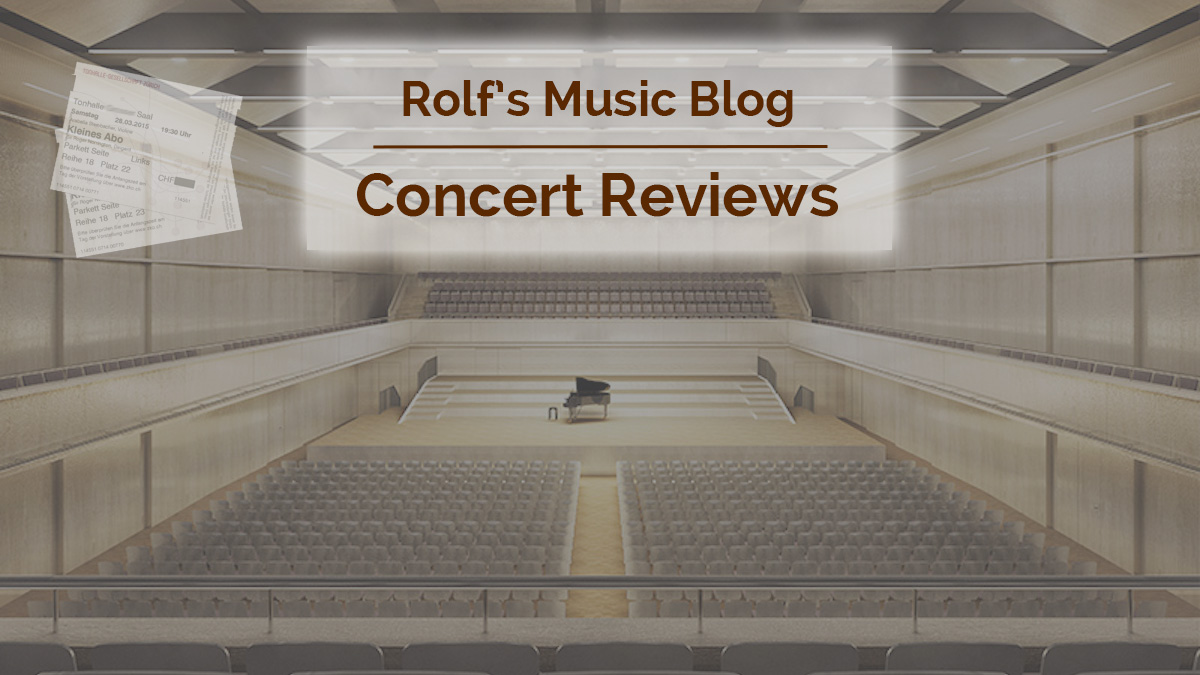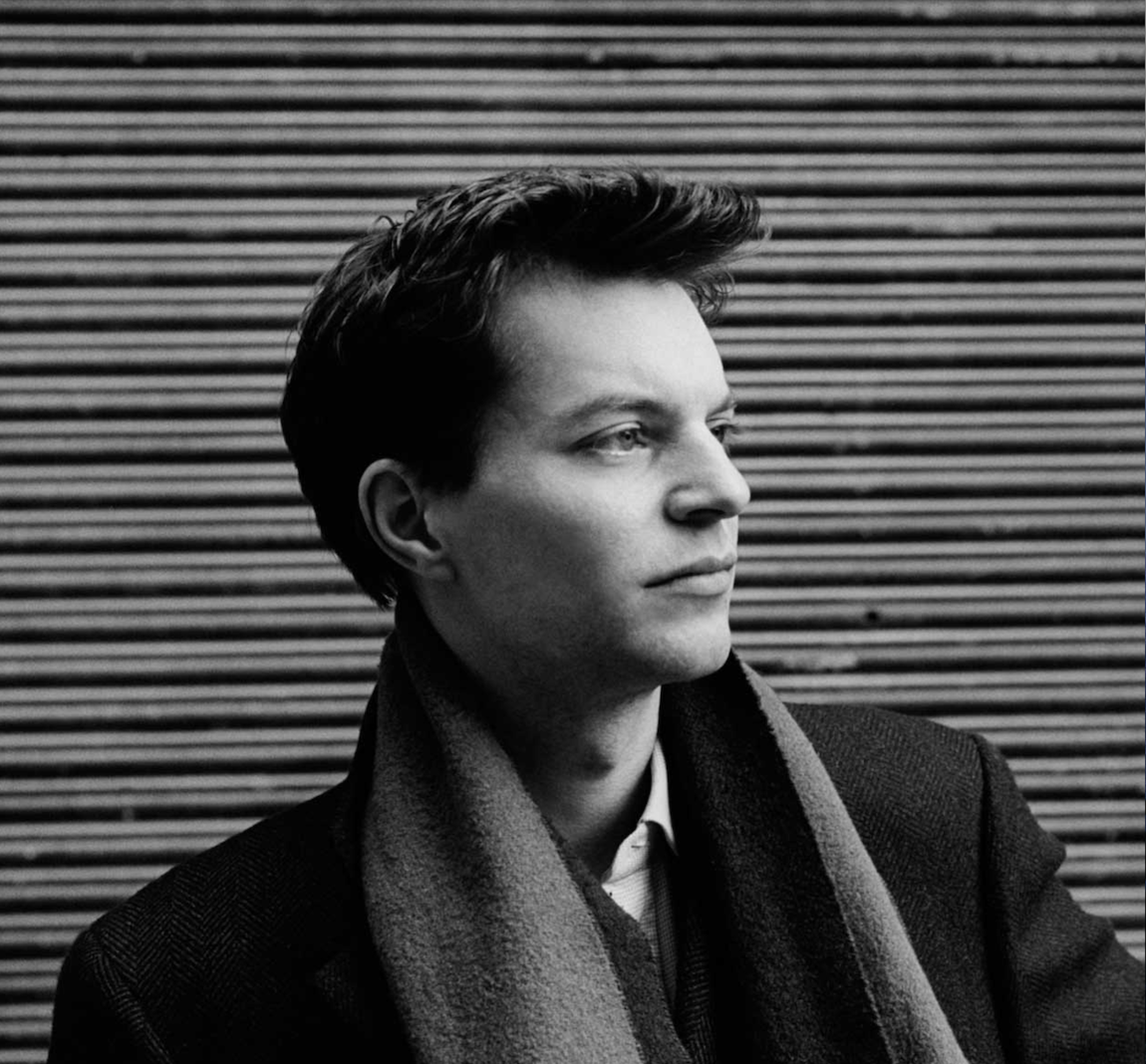Till Fellner, Bernard Haitink / Tonhalle Orchestra
Mozart / Bruckner
Tonhalle Maag, Zurich, 2018-09-19

2018-10-10 — Original posting
Fingerfertigkeit, Sorgfalt und Altersreife: Till Fellner und Bernard Haitink in Zürich — Zusammenfassung
Mit seinen 89 Jahren bot Bernard Haitink in Bruckners Siebter eine beeindruckende Leistung. Till Fellner glänzte vor allem im Schlusssatz des Mozart-Konzerts mit fantasievollen Verzierungen und einer eigenwillig-unterhaltsamen Kadenz.
Table of Contents
Introduction
A few days after the season opening, the Tonhalle Orchestra Zurich (see also Wikipedia) worked with one of its favorite guest conductors, maestro Bernard Haitink (1929 – 2021). And not unexpectedly, the Tonhalle Maag was sold out for this event.
Program
The program “just” featured two works:
- Mozart: Piano Concerto No.22 in E♭ major, K.482
(Intermission) - Bruckner: Symphony No.7 in E major, WAB 107
With the Mozart concerto lasting some 35 minutes, the first part of the concert may have been shorter than usual. However, this was more than compensated by the dimension of Bruckner’s Seventh, lasting well over an hour. Even just from the dimension, this could be seen as a substantial challenge for the maestro with his 89 years.
Soloist
Prior to the intermission, the Austrian pianist Till Fellner (*1972, see also Wikipedia) made his first appearance with this orchestra. Fellner grew up in Vienna and attended the Konservatorium der Stadt Wien. His key teachers include Alfred Brendel (*1931) and Oleg Maisenberg (*1945). Till Fellner is an active chamber musician, but also pursues a career as soloist. Since 2013, he is also teaching at the ZHdK, the Zürcher Hochschule der Künste (Zurich University of the Arts).
General Remarks
The orchestra use the modern podium arrangement, with both violins on the left, followed by the violas, cellos on the right, double basses in the rear right. The instrument in the piano concerto was a Steinway D-274 concert grand (lid fully open, of course). For the Mozart concerto, the orchestra played in a reduced formation.
My wife and I had stall seats 12 & 13 in row 14, on the left side of the hall.
Mozart: Piano Concerto No.22 in E♭ major, K.482
Wolfgang Amadeus Mozart (1756 – 1791) composed his Piano Concerto No.22 in E♭ major, K.482 in 1785. It features three movements:
- Allegro (4/4)
- Andante (3/8)
- Allegro (6/8) — Andantino cantabile (3/4) — Tempo I
For further information on the composition see my earlier posting with a comparison of several recordings.
The Performance
At first, the attraction was not the soloist, but the conductor. Bernard Haitink entered the stage autonomously, but in careful, measured steps. He maneuvered through the rows of the orchestra, frail, almost transparent, taking his time. He received help from the first desks in stepping up onto the conductor’s podium. Haitink almost looked embarrassed when he accepted the warm welcome applause—as if he were to say “alright, alright—let’s get started with the music!”.
As soon as he raised the baton, though, he had the full attention by everybody in the orchestra. Haitink conducted with economic, often minimal, but clear and precise gestures. Everybody focused on the music, so intensely and with so much attention that occasionally (especially in the Bruckner symphony) one had the impression of seeing “only first desks” in the string section!
I. Allegro
I did not anticipate a revolutionary interpretation in any way in this setting. Yet, already the opening fanfare in the orchestral introduction sounded amazingly resolute, with a fresh, natural tempo. And the sound remained transparent, thanks to the reduced orchestral formation. The subsequent, lyrical theme featured light articulation, easing longer note values. The orchestra kept an ideal balance between melodious cantilenas (particularly in the wind instruments) and a transparent texture. And where Mozart asks for f, the orchestra certainly also had the necessary “grip”.
Till Fellner’s playing was fluent, light, his tone singing, more legato than the orchestra. His articulation, phrasing and dynamics were careful, diligent, his agogics made the solo expressive, “talking”.
Overall, it was an interpretation as one would expect it from a Steinway-D: compared to a historical fortepiano, the instrument smoothed out the expression in the details of the articulation. Mozart wrote this concerto for himself, and so, we can assume that he wanted to demonstrate his abilities as a keyboard virtuoso, by adding a certain amount of “show” to the solo part. Here, I also felt that with all the care and diligence, that show element was largely lost, the occasional surprise elements (sudden modulations, changes in theme / tone) evened out. Only in the cadenza (I presume it was Fellner’s own) I noted an occasional trait of improvisation, a taste of virtuosic show. — ★★★½
II. Andante
Bernard Haitink approached the Andante very carefully. The muted strings were very expressive, and Fellner used the concert grand’s abilities to produce a singing tone and melody line to the advantage of the music. After the first piano solo, the woodwinds perform a little serenade—beautifully played, really enchanting.
That movement is a set of variations, and so, it is certainly OK to give individual variations their own characters, to vary the tempo within certain limits, even if the score has no extra tempo annotations. Here, the artists deliberately, consciously kept the segments separated by moderate caesuras. However, I noted that not all transitions within the movement were entirely harmonious. I also felt that the final ritardando was not really necessary, as the last movement follows attacca. — ★★★½
III. Allegro — Andantino cantabile — Tempo I
Within the concerto, the last movement was the highlight. In contrast to the “grippy” orchestra, the solo part often sounded tender, but still fluent, with jeu perlé in the scales and runs. Till Fellner appropriately filled the wide, multi-octave intervals that Mozart deliberately left up to the soloist to “interpolate” with suitable passagework. Often, especially towards the end of the movement, the soloist added suitable, excellently fitting, extra ornaments. From a historical point-of-view, the style of big cadenza was maybe somewhat daring. However, it was definitely entertaining: with occasional fugato, then again so motoric that it reminded me of Mendelssohn. I’m pretty sure that the composer would have enjoyed this “expansion”! — ★★★★
Overall Rating: ★★★½
Bruckner: Symphony No.7 in E major, WAB 107
Anton Bruckner (1824 – 1896) composed his Symphony No.7 in E major, WAB 107, 1881 – 1883, the final revision was completed 1885. The symphony has the following (usual) four movements:
- Allegro moderato
- Adagio: Sehr feierlich und sehr langsam
- Scherzo: Sehr schnell — Trio: Etwas langsamer
- Finale: Bewegt, doch nicht schnell
Less than a month earlier, on 2018-08-25, I attended a concert featuring this composition, as part of the Lucerne Festival; see that concert review for more information on this work.
The Performance
Throughout the evening, the orchestra gave an excellent performance. In the Bruckner symphony, I particularly (expectedly) noted the excellent wind section, and the homogeneous, intense sound of the strings. Of course, the analytic acoustics were instrumental in keeping the sound transparent, spatially clear and well-resolved. My one quibble here: the strings sounded maybe a bit “hard”, direct.
I. Allegro moderato
It was admirable how well Bernard Haitink managed to maintain the flow in Bruckner’s symphony, even when the music calmed down, got silent, started anew. Tempo transitions were entirely, exceptionally natural, often unnoticeable. I was particularly touched by the intimates moments in this interpretation. Despite his very economic gestures, Haitink kept control over the orchestra. One area where this was evident was in the dynamics: powerful, where necessary, but never exceeding the capacity of the acoustics, the venue. This held true even in the never-ending, almost ecstatic, jubilant, triumphant ending of the movement—in my view the actual climax of the entire symphony. — ★★★★★
II. Adagio: Sehr feierlich und sehr langsam
The Adagio is a funeral music, somber, dark, sad. One peculiarity in the movement is the use of tenor tubas, a.k.a. Wagner tubas. Too bad the characteristic, slightly “covered”, muted sound of these instruments didn’t come to full bearing. Still, I was impressed by the gradual change from the painfully dissonant, first episode from these instruments, up to the sad, but forgiving ending.
Between these two tuba episodes, the movement culminated in a climax with the ominous cymbals and triangle beat. This is characteristic for the final, third version of the symphony. Bruckner initially didn’t even use these instruments (their only use is in this single instance / beat, they are not used elsewhere in the entire symphony). However, some of Bruckner’s very pretentious “consultants” felt like suggesting the addition of these instruments at the climax, and the composer humbly and duly followed that recommendation. The advice may have been given with the best intent, and it is now considered “Bruckner’s final, approved will”—still, I think it is questionable to keep that beat: it does not add real value. — ★★★★½
III. Scherzo: Sehr schnell — Trio: Etwas langsamer
The Scherzo was impressive in the precision, the coordination and discipline of the strings. And again, Haitink’s tempo choice was natural, compelling. Similarly, in the Trio, the conductor convinced with his ability to span large dramatic arches. — ★★★★½
IV. Finale: Bewegt, doch nicht schnell
Even in the final movement, after around 1.5 hours of conducting, Bernard Haitink’s conducting remained both concise and precise, completely keeping up the intensity. Dramatic segments were resolute and powerful in the expression. The tempo remained fluent, and the conductor was excellent at maintaining the tension also across general rests. Even in the powerful fff ending, Haitink avoid an excessive broadening, as well as inappropriate transfiguration.
Throughout the symphony, while conducting, Haitink never showed signs of fatigue—of age, indeed. Only at the very end, after the last note, he no longer seemed to have the will, the energy to hold the tension for a solemn “after-moment”. And in the applause it became apparent how power-draining, how exhausting the concert must have been to him. Still, he returned to the podium for several “curtains”, in which also the orchestra showed its gratitude and well-deserved respect. — ★★★★
Overall Rating: ★★★★½
Addendum
For this concert I have also written a (shorter) review in German for Bachtrack.com. This posting is not a translation of the Bachtrack review, the rights of which remain with Bachtrack.com. I created the German review using a subset of the notes taken during this concert. I wanted to enable my non-German speaking readers to read about my concert experience as well. Therefore, I have taken my original notes as a loose basis for this separate posting. I’m including additional material that is not present in the Bachtrack review.



